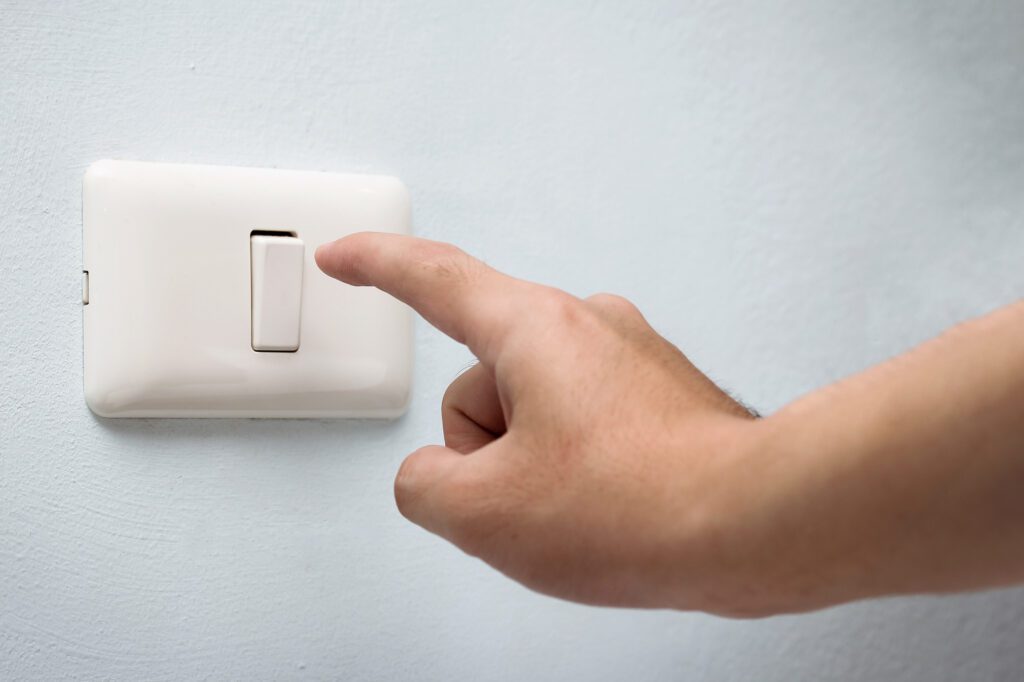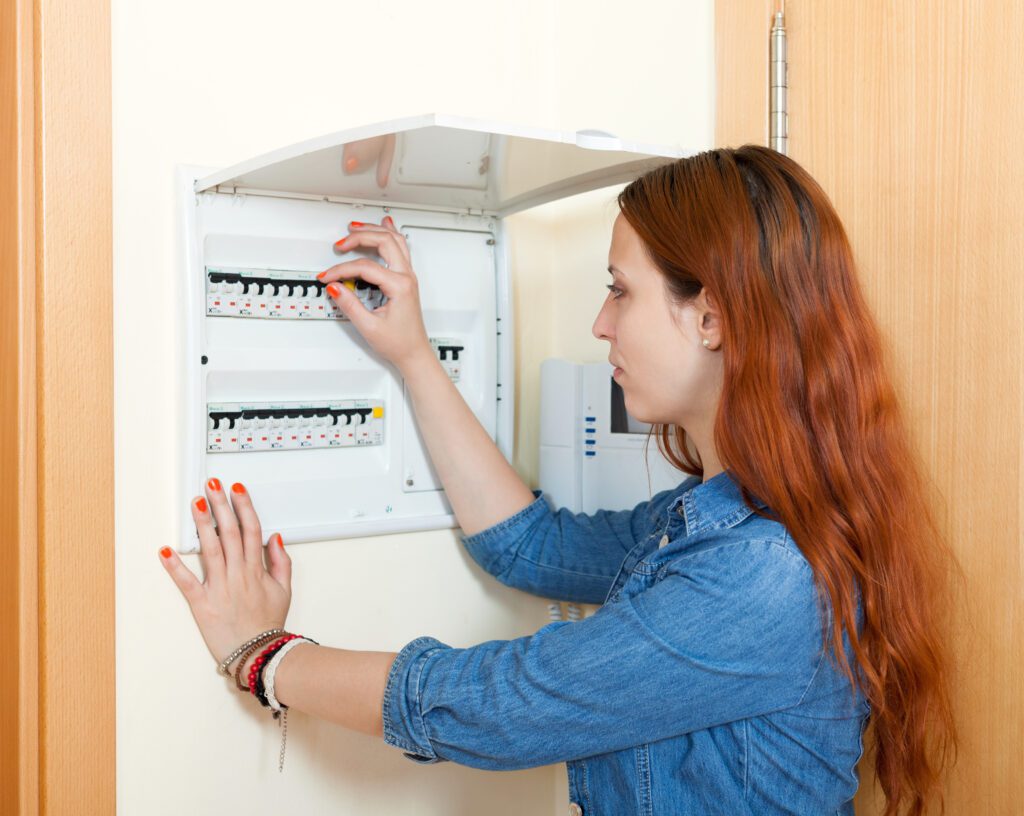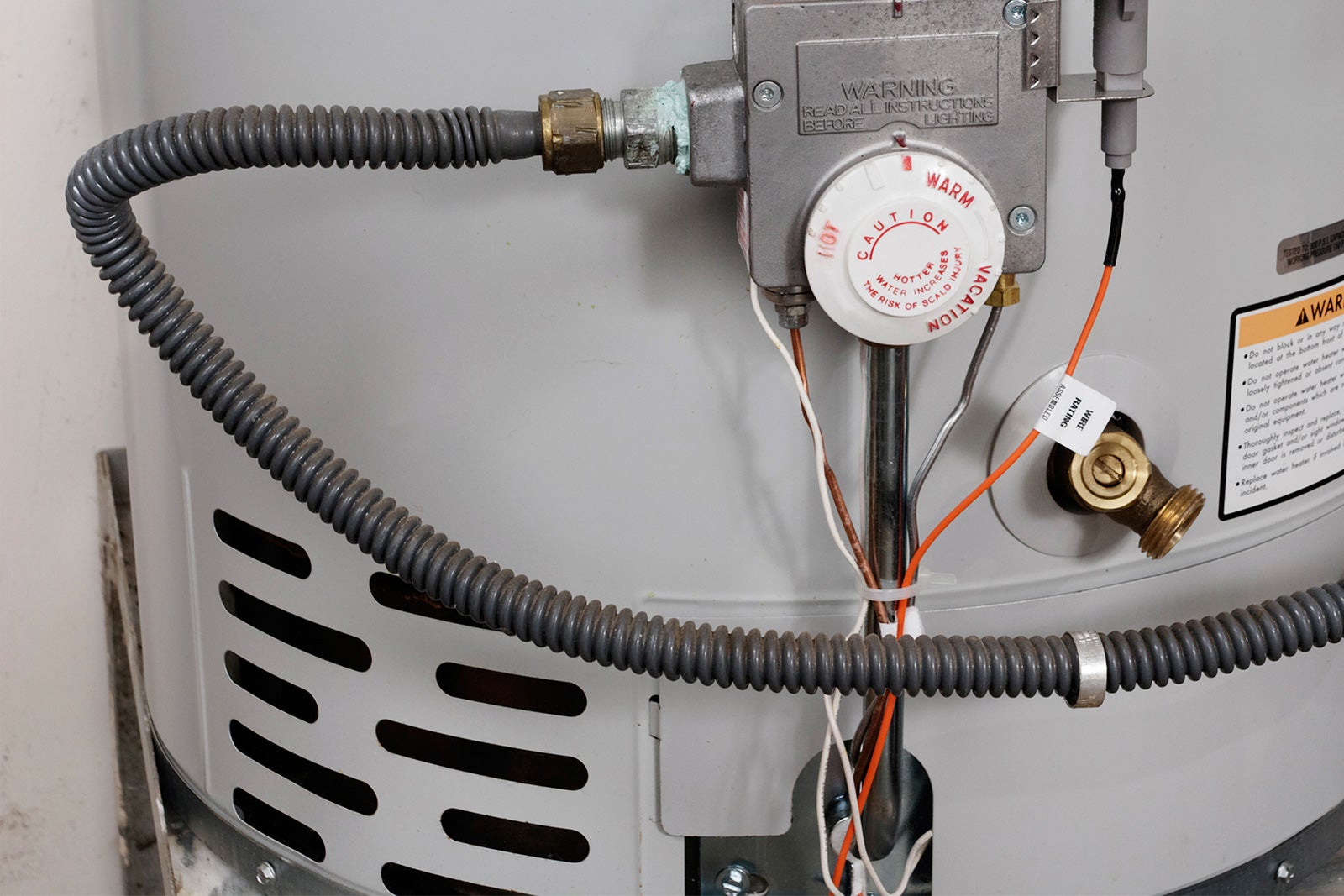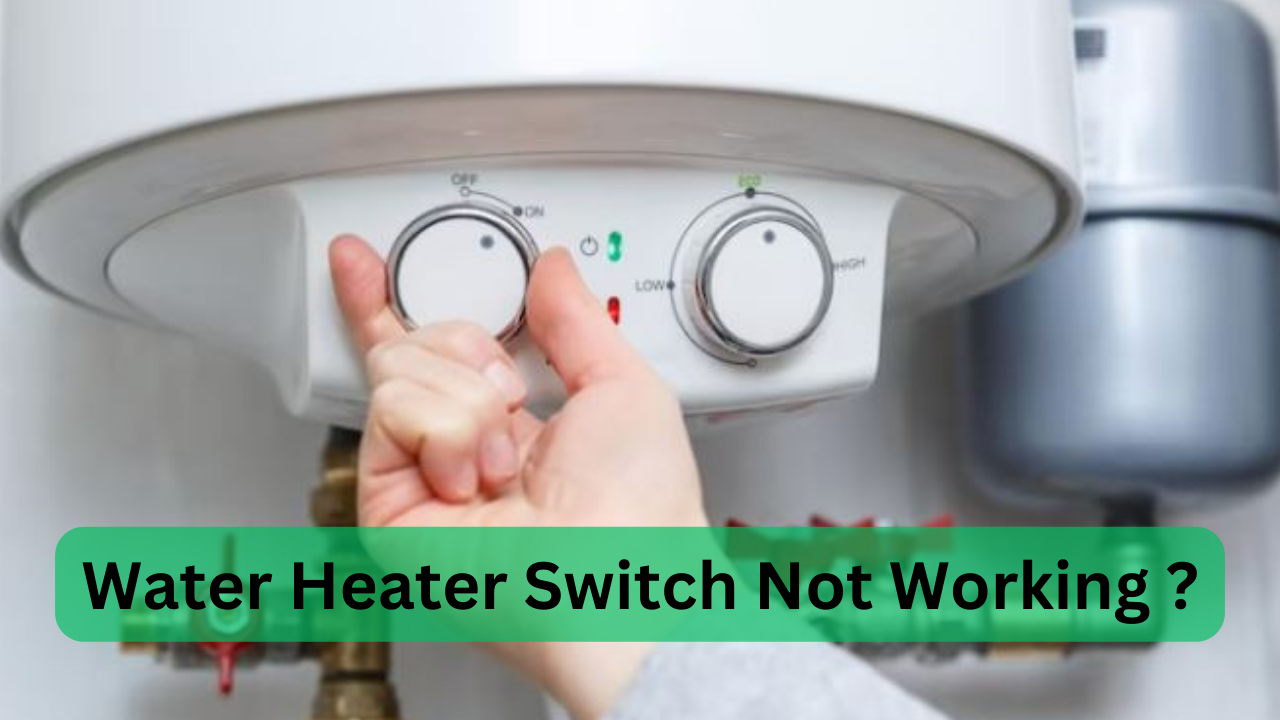To fix a water heater switch not working, first check the circuit breaker in the service panel to ensure it hasn’t tripped, and reset it if necessary. If the breaker is fine, you may need to reset the high-temperature limit on the water heater.
It is crucial to address these issues promptly as a faulty switch can pose a safety hazard, including the risk of electrocution or fire. It’s important to note that improper wiring or electrical connections can cause the switch to fail, and professional assistance may be necessary to resolve these issues.
Additionally, testing the water heater switch with a multimeter can help diagnose any electrical continuity problems.
Identifying Your Water Heater Type
Before attempting to fix a water heater switch that is not working, it is crucial to identify the type of water heater you have. This will help you understand the specific troubleshooting steps and safety measures you need to take. Follow the steps below to determine if you have an electric or gas water heater.
Determine If You Have An Electric Or Gas Water Heater
To determine whether your water heater is electric or gas-powered, you can look for a few telltale signs:
- Check for a gas supply line connected to the water heater. If you see a gas supply pipe leading into the unit, it is likely a gas water heater.
- If there is no gas supply pipe and you find an electrical cable or power cord connected to the water heater, it is an electric water heater.
Check The Manufacturer’s Label For Model And Troubleshooting Guide
Once you have determined the type of your water heater, it is important to check the manufacturer’s label on the unit. This label often contains valuable information that can help you troubleshoot and fix the issue with the water heater switch not working.
Look for the model number on the label and make a note of it. You can then refer to the manufacturer’s troubleshooting guide or search for the manual online by entering the model number. The troubleshooting guide will provide specific instructions for fixing common issues with your particular water heater model.
Additionally, the manufacturer’s label may include important safety guidelines or warnings. It is essential to read and adhere to these instructions to prevent any accidents or further damage to the water heater.
By following these steps, you can correctly identify your water heater type and find the necessary information to troubleshoot the issue with the water heater switch not working. Remember to always prioritize safety and consult a professional if you are unsure about any aspect of the repair process.
Initial Water Heater Switch Checks
If your water heater switch is not working, there are some initial checks you can perform to troubleshoot the issue. By inspecting the water heater switch for visible damages and testing its electrical flow with a multimeter, you can pinpoint the cause of the problem and potentially fix it yourself.
Inspect The Water Heater Switch For Visible Damages
The first step is to visually inspect the water heater switch for any visible damages. Look for any signs of physical damage such as cracks, burns, or loose wires. If you notice any of these issues, it is likely that the switch itself is faulty and needs to be replaced.
- Locate the water heater switch.
- Check the switch for any physical damages such as cracks, burns, or loose wires.
- If you find any visible damages, it is recommended to replace the switch with a new one to ensure safe and proper operation of your water heater.
Test The Switch’s Electrical Flow With A Multimeter
If you don’t find any visible damages on the water heater switch, the next step is to test its electrical flow using a multimeter. This will help determine if the switch is functioning properly or if there is an issue with the electrical connection.
Follow these steps to test the switch’s electrical flow:
- Ensure that the power to the water heater is turned off.
- Set your multimeter to the continuity or ohms setting.
- Touch one lead of the multimeter to one terminal of the switch and the other lead to the other terminal.
- If the multimeter displays a reading close to zero ohms of resistance, it means the switch is conducting electricity properly. If there is no reading or a high resistance reading, it indicates a faulty switch that needs to be replaced.
- If the switch is faulty, it is recommended to consult a professional electrician to replace it safely and avoid any electrical hazards.
By following these initial water heater switch checks, you can determine if the switch is the cause of the problem. Remember to always prioritize your safety and consult a professional if you are unsure about handling electrical components.

Credit : www.freepik.com/
Water Heater Switch Not Working
If you’re experiencing issues with your water heater switch not working, it can be quite frustrating. However, before you panic and call a professional, there are some simple steps you can take to troubleshoot and potentially fix the problem yourself. In this guide, we’ll walk you through a few common causes of a malfunctioning water heater switch and provide easy solutions to get your hot water flowing again.
Check For A Tripped Circuit Breaker Or A Blown Fuse
One of the first things you should do when your water heater switch is not working is to check for a tripped circuit breaker or a blown fuse. This is a common issue that can easily be resolved. Here’s how to do it:
- Locate your home’s service panel or fuse box.
- Open the door or panel cover to expose the circuit breakers or fuses.
- Inspect each breaker or fuse to see if any are in the tripped or off position.
- If you find a tripped breaker, firmly switch it to the off position, and then back to the on position.
- If you find a blown fuse, replace it with a new one of the same amperage.
This simple solution may resolve the issue and restore power to your water heater switch. However, if the breaker continues to trip or the fuse keeps blowing, there may be a deeper electrical problem that requires professional assistance.
Assess The Water Heater’s High-temperature Limit Switch
Another possible cause of a water heater switch not working is a faulty high-temperature limit switch. This is a safety device that automatically shuts off the power to the heating elements if the water temperature becomes too high. Here’s how to assess and reset the high-temperature limit switch:
- Locate the high-temperature limit switch on your water heater. It is typically a red or black button located near the heating elements.
- Make sure the power to the water heater is turned off.
- Press the reset button on the high-temperature limit switch firmly.
- Once reset, restore power to the water heater and check if the switch is now functioning.
If the high-temperature limit switch continues to trip or the water heater switch still does not work, it may indicate a malfunction with the switch itself. In this case, it’s best to consult a professional to diagnose and repair the issue.
By checking for a tripped circuit breaker or blown fuse and assessing the high-temperature limit switch, you can often resolve issues with a water heater switch not working. However, if these troubleshooting steps do not solve the problem, it’s always advisable to seek professional help to ensure your safety and the optimal performance of your water heater.

Advanced Troubleshooting Tips And Fixes
If you’re experiencing issues with your water heater switch not working, don’t panic just yet. There are a few advanced troubleshooting tips and fixes that you can try before calling in a professional. In this section, we’ll explore some common issues that might be causing the problem and provide step-by-step instructions on how to address them.
Inspect The Thermostat And Heating Elements
One possible reason for a malfunctioning water heater switch is a problem with the thermostat or heating elements. To inspect the thermostat, first, turn off the power to the water heater at the circuit breaker. Remove the access panel cover and carefully examine the thermostat for any signs of damage or loose connections. If everything looks intact, you can test the thermostat using a multimeter to check for continuity.
Next, if the thermostat is functioning correctly, you can move on to inspecting the heating elements. Again, make sure the power is off before proceeding. Use a multimeter to test for continuity in the heating elements. If any of the elements show no continuity, it indicates a faulty heating element that needs to be replaced.
Evaluate The Water Heater Timer If Applicable
If your water heater has a timer feature, it’s essential to evaluate this component as well. A faulty timer can cause the switch not to work as expected. Locate the timer and check if it is set correctly and operating as intended. If you notice any issues, such as a malfunctioning timer motor or loose connections, consider replacing or repairing the timer.
Test For Continuity In The Heating Elements
In addition to inspecting the heating elements for damage, it’s important to test them for continuity. With the power off, use a multimeter to check for continuity in each heating element. A reading of infinite resistance indicates a broken or faulty element that requires replacement.
Remember to always exercise caution and turn off the power to the water heater before conducting any inspections or repairs. If you are unsure or uncomfortable performing these troubleshooting steps yourself, it’s best to seek the assistance of a qualified professional.
When To Seek Professional Help
While there are basic troubleshooting steps you can take to fix a water heater switch not working, there are certain situations where it is best to seek professional help. Issues beyond basic troubleshooting steps, situations involving gas lines or advanced electrical work, and potential warranty implications or complex repairs require the expertise of a professional. Let’s delve deeper into each of these scenarios:
Issues Beyond Basic Troubleshooting Steps
If you have already checked the water heater’s circuit breaker in the service panel and reset the high-temperature limit on the heater, but the switch still isn’t working, it may indicate a more complex issue. There could be underlying electrical problems or faulty wiring that require the attention of a professional electrician or plumber.
Situations Involving Gas Lines Or Advanced Electrical Work
Working with gas lines or advanced electrical components of a water heater can be dangerous if you don’t have the proper knowledge and experience. If you suspect issues with the gas supply or the electrical system, it’s crucial to call a licensed plumber or electrician. They have the expertise to safely handle these complex tasks and ensure proper installation and repair.
Potential Warranty Implications Or Complex Repairs
Attempting to fix a water heater switch on your own without proper knowledge and experience may void the warranty. It’s important to read the warranty details and understand the terms and conditions before attempting any repairs. Additionally, if the issue seems complex and beyond your capabilities, it’s advisable to consult a professional. They can accurately diagnose the problem, perform any necessary repairs, and help you avoid any potential warranty complications.
Remember, safety should always be a priority. It’s better to seek professional help to avoid serious risks, such as electrical hazards or gas leaks. Leave the complicated repairs and troubleshooting to the experts who have the knowledge and tools to handle the job efficiently and safely.

Credit: www.ahs.com
Frequently Asked Questions Of Water Heater Switch Not Working
Why Is My Water Heater Switch Not Working?
If your water heater switch is not working, first check the circuit breaker in the service panel to see if it has tripped. Reset it by turning it off and then back on. If the breaker is fine, reset the high-temperature limit on the heater.
Issues may also arise from improper wiring or electrical connections. It’s recommended to seek professional help if the problem persists.
How Do You Reset A Water Heater Switch?
To reset a water heater switch, follow these steps: 1. Check the circuit breaker in the service panel to ensure it hasn’t tripped. 2. If it has tripped, turn it off and then back on. 3. If the breaker didn’t trip, reset the high-temperature limit on the heater.
4. If the problem persists, check for improper wiring or electrical connections. 5. It’s recommended to let a professional handle any wiring issues for safety.
How Do You Test A Water Heater Switch?
To test a water heater switch, first check the circuit breaker in the service panel to see if it has tripped. Reset it if necessary. If the breaker is not the issue, use a multimeter to test the switch for proper electrical continuity.
Ensure proper wiring and connections are in place to avoid hazards.
Why Is My Water Heater Not Turning On?
If your water heater is not turning on, there are a few reasons why this could be happening. First, check the circuit breaker in the service panel to make sure it hasn’t tripped. If it has, switch it off and then back on.
If the breaker is not the issue, you may need to reset the high-temperature limit on the heater. Another possibility is improper wiring or electrical connections, which can be a fire hazard. If you’re unsure, it’s recommended to consult a professional rather than attempting to fix it yourself.
Conclusion
If your water heater switch is not working, there are a few troubleshooting steps you can take to fix the issue. First, check the circuit breaker in the service panel to make sure it hasn’t tripped. Reset the high-temperature limit on the heater if necessary.
Improper wiring or electrical connections can also cause the switch to fail, so it’s important to check for any wiring issues. If you’re unsure or uncomfortable with handling electrical work, it’s best to seek professional help. Remember, safety should always be a top priority when dealing with electrical equipment.

I am a Water Heater specialist writer and blogger based in the USA & UK. I have been working with Water Heater for six long years. And I give trips on various Water Heater problems and solutions. I have a lot of experience with Water Heater And I share them here

